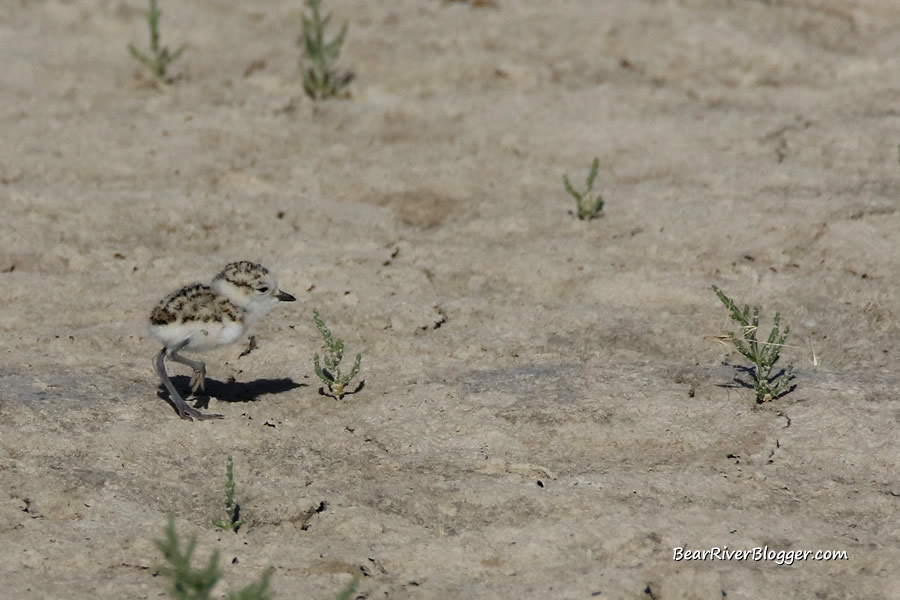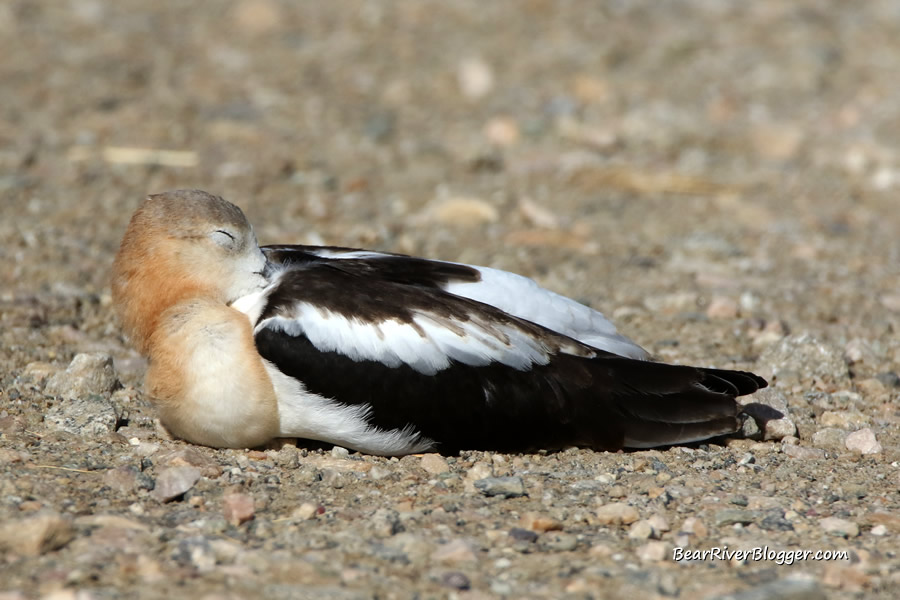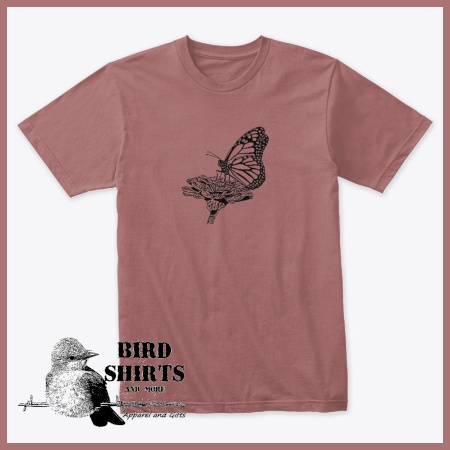Yes, my bird-loving friends, they are finally here.
Like it or hate it, either way I am pleased to report the sultry dog days of summer have now arrived and they are officially cooking us once again.
Day after day, week after week, even month after month it seems, northern Utah is typically plagued with an annual blistering heat wave and a seemingly endless lack of measurable rainfall to go with it.
Not exactly the most pleasant of birdwatching conditions I will admit, giving reason for many of us birders to ponder if the Bear River Migratory Bird Refuge is worth visiting during these sweltering stretches of the relentless summer sun.
So why would I say I am “pleased to report” the hot summer months are now upon us when biting bugs, scorching temperatures, and arid landscapes are now in season and will be for a couple more months?
Well, simply put, late summer and into early fall is actually one of the best times to visit both the Bear River Migratory Bird Refuge auto tour route and the Great Salt Lake causeway for one simple reason, it’s the early stages of fall migration and that means thousands of shorebirds begin to congregate on and migrate through the Great Salt Lake ecosystem this time of year.
I will say, however, there is always a variety of bugs to contend with during the summer months, including pesky mosquitos and biting horseflies, but that is why the Bear River Migratory Bird Refuge auto tour route and the Great Salt Lake causeway are actually, in my mind that is, the better places to go birdwatching during late summer.

Both places offer good birdwatching opportunities for a variety of water birds from the inside of one’s vehicle and out of reach from the plethora of hungry insects.
As an example of this, last week, the Bear River Migratory Bird Refuge volunteer bird survey team reported observing a total of 55,481 birds comprised of 72 different species, all from the safety of their vehicle on both Forest Street and the auto loop.
And last week’s results more than doubled the number of birds seen from the previous week’s survey that totaled 26,941 birds observed.
That easily translates into one thing, fall migration has now begun and shorebirds are typically some of the earliest birds to begin their fall migratory journey.
In fact, some of the bird species seen from last week’s refuge volunteer bird count include the eared grebe, American avocet, long-billed dowitcher, Wilson’s snipe, and, of course, Wilson’s phalarope, just to name a few from their list.
(White-faced Ibis Feeding In A Wetland. For short nature clips like this one and interesting stories about the natural world around us, check out our Bear River Blogger channel on YouTube for videos and updates from our travels while out in nature, both on and off of the famed Bear River Migratory Bird Refuge.)
But late summer isn’t only about migrating shorebirds on the Bear River Migratory Bird Refuge as birdwatching in general is pretty productive this time of year as well.
Many birds are still raising and nurturing their offspring into early fall, offering the observant birder an opportunity to find something unique as well as the chance for a new species or two to be crossed off of their birding “life list”.
I had both of those opportunities given to me a couple days ago while driving down Forest Street to the bird refuge auto loop when a snowy plover and what appeared to be a newly hatched chick was found casually standing in the middle of the asphalt road.
As strange as it may seem, the snowy plover is a bird I had never seen before until today, allowing me to cross it off both my birding and photography life lists.
And seeing the newly hatched plover chick at the same time made the chance meeting quite unique and memorable for me as well.
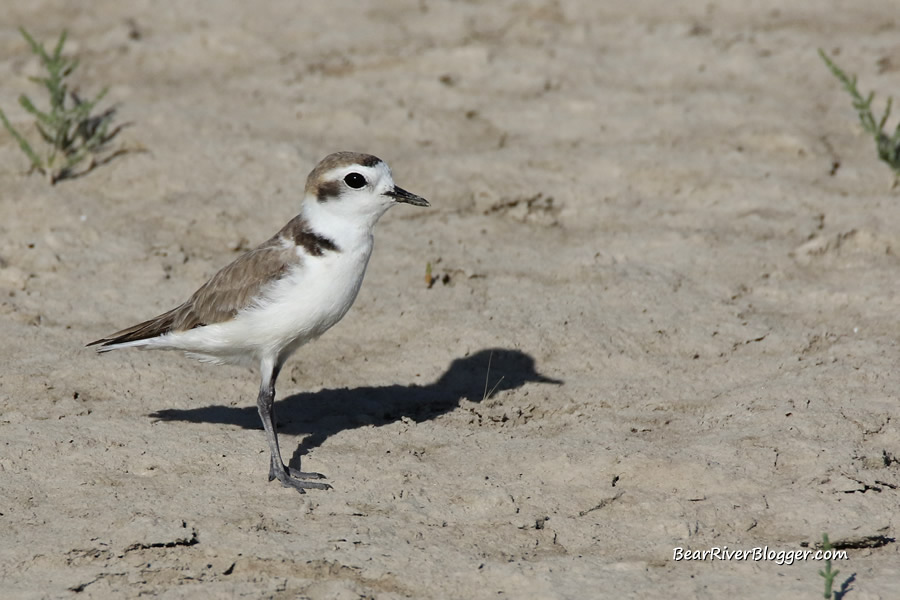
Fortunately, for this particular instance, traffic was virtually non-existent on the roadway and the solitary plover and its tiny chick (picture at the end of this blog post) quickly made their way to the safety of the nearby alkaline flats and off the usually busy roadway.
Once I had made it through the main gate and started my way around the auto tour route, I noticed not one but two great horned owls perched upon the light fixtures on the backside of the large maintenance building.
Great horned owls are common birds on the Bear River Migratory Bird Refuge but aren’t always seen due to the lack of trees or other places for them to perch on the auto loop during the day.
One place that an interested birdwatcher can regularly find a great horned owl on the refuge, however, is on the north side of the maintenance shed where they commonly sleep during the day.
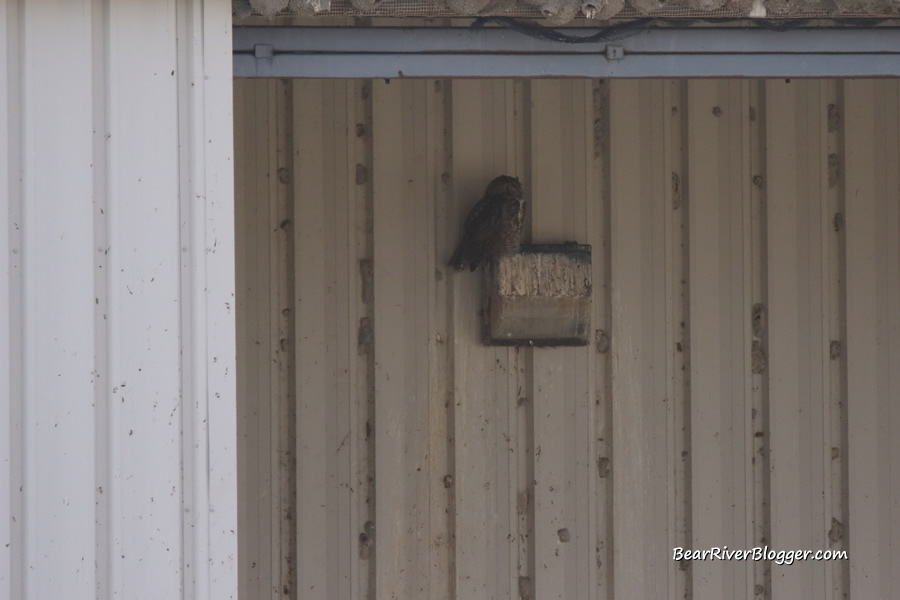
The area is fenced off and bordered by the river channel, limiting access to the area for you and me, but these particular great horned owls are easily observed from across the river channel even without the aid of binoculars or a spotting scope.
Driving the auto tour route gave me numerous opportunities to find and photograph both black-necked stilts and American avocets resting on the gravel roadway.
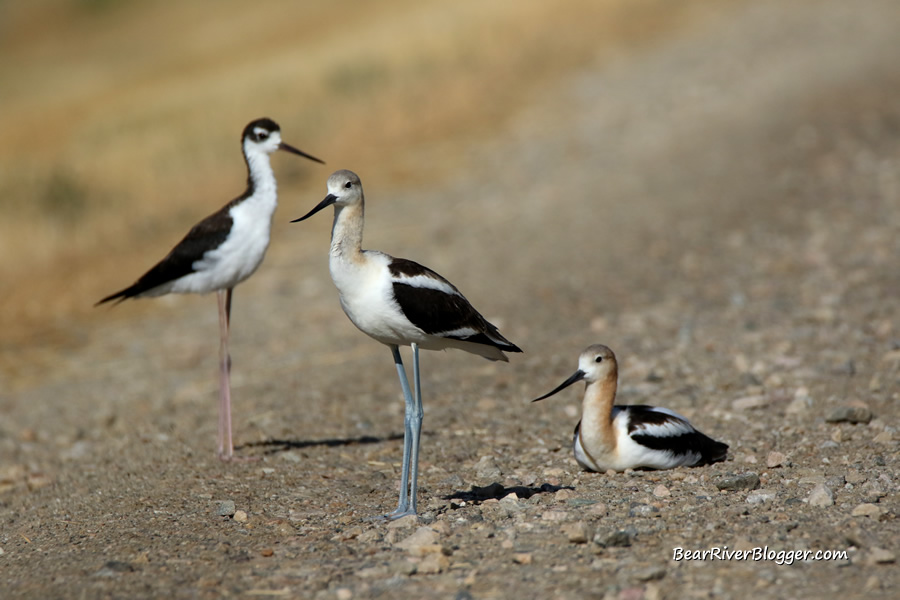
Soon both species of migratory shorebirds will be gone for the year but for now, the Bear River Migratory Bird Refuge auto tour route has quite a few stilts and avocets that seem to enjoy sleeping on the 12-mile public thoroughfare during the day.
I won’t go into detail about all the birds I came across on my trip around the auto loop, I’ll let people discover that for themselves when they come, but I will say one bird that was, unfortunately, in short supply (the reason being will be in an upcoming blog post) that day was the American white pelican.
It wasn’t until I drove 3/4 of the way around the loop that I found the first and only small pod of pelicans roosting on a sandbar on the southernmost portion of the route.

Typically, the Bear River Migratory Bird Refuge feeds hundreds, if not thousands, of hungry adult American white pelicans each day due to one of the biggest pelican rookeries in the United States, Gunnison Island, being just 30 miles to the west.
But, sadly, pelicans were in short supply today and have been all summer long from my observations, but that is another story for another day so stay tuned.
All in all, even with the scorching hot temperatures, parched landscape, and hungry insects, the Bear River Migratory Bird Refuge is still a great place to go birdwatching during late summer and early fall, especially at first light when the bugs aren’t so bad and the summer sun hasn’t had time to really heat things up for the day.
It’s also a nice place to find and enjoy another iconic migratory creature that lives on the bird refuge during the hot summer months, the monarch butterfly.

Last week’s refuge volunteer bird count also tallied 4 monarch butterflies and I have seen 2 monarchs on the auto tour route during my latest trip around the loop so if you visit the refuge this summer, keep your eyes peeled for these beautiful winged creatures while on the refuge.
If you are cut from the same cloth as I am, the birdwatching and nature enthusiast cloth that is, I offer you to head on over to our subscribe page and sign up for email notifications for future blog posts.
In addition to our blog and YouTube channel, we have also just started a Bear River Blogger Facebook page so feel free to follow us there as well.
My goal is to keep you informed on what we see on our many birdwatching and nature excursions on and off of the famed Bear River Migratory Bird Refuge, hoping to instill the same love of nature that has been growing inside of me for decades now.
